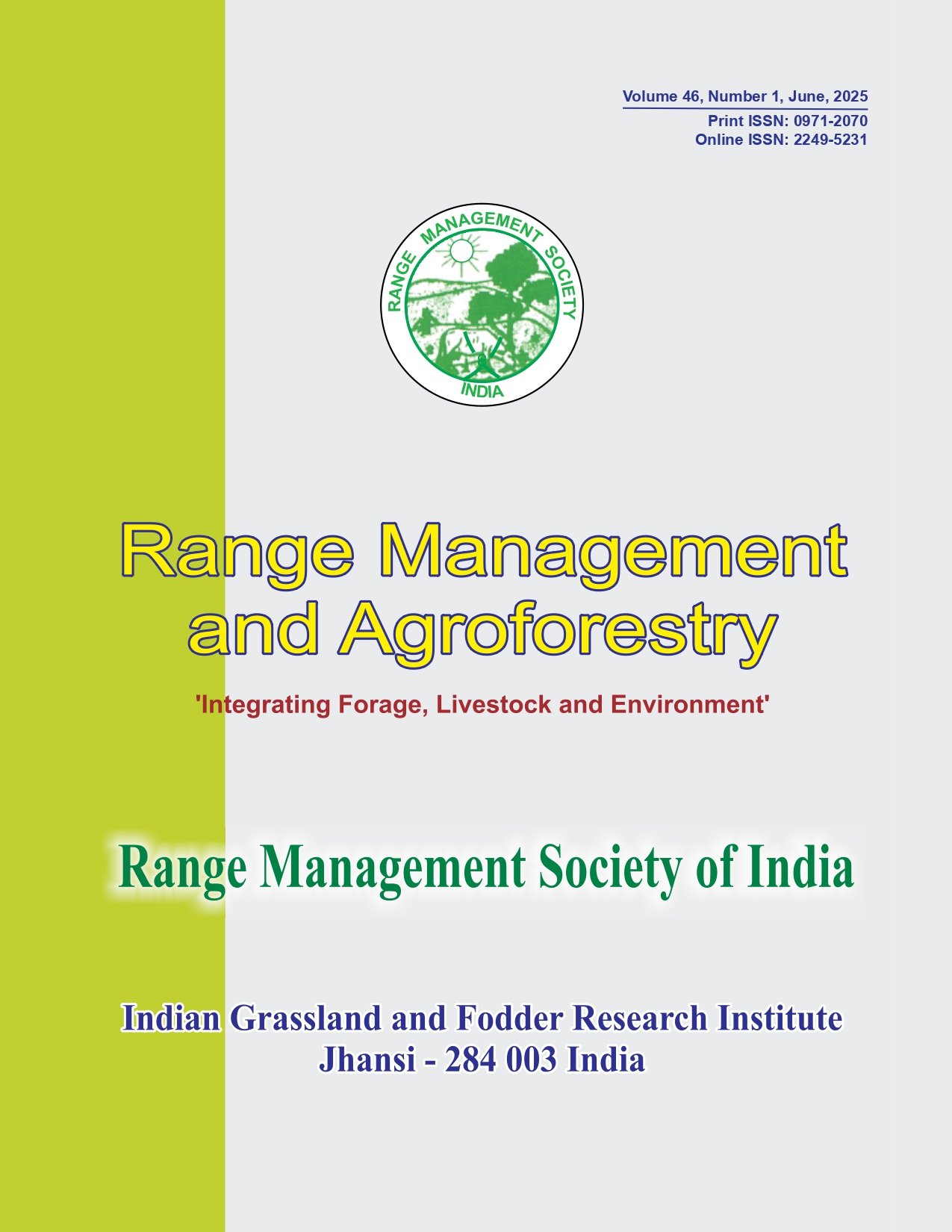Historical changes affecting pastoralism in Banni grasslands and contemporary priorities of the pastoralists
DOI:
https://doi.org/10.59515/rma.2025.v46.i1.02Keywords:
Banni buffalo, Banni grassland, desertification, pastoralism, Prosopis julifloraAbstract
Pastoralism in Banni grasslands has evolved and adapted to significant ecological, geo-political, socio-economic and policy changes. This article critically examined the historical changes affecting pastoralism in Banni grasslands and identified the contemporary priorities of pastoralists concerning their livelihood. A socio-economic investigation was undertaken in Banni grasslands from 2014 to 2019 using primary, secondary and historical data. Traditionally, the pastoralists of Banni, mainly represented by the Maldhari community, have been amongst the finest cattle breeders and suppliers of the superior Kankrej bullocks for draught purposes in the region. The designation of Banni as a Protected Forest (1955) and the planting of Prosopis juliflora (1960s) by the Forest Department of Gujarat State are significant milestones in Banni after India’s independence. Pastoralists perceived that their livelihood is mainly constrained by successive and severe droughts, rapid invasion of P. juliflora, lack of access to dairy cooperatives, overgrazing and overall degradation in that order of severity. However, the community adapted to these ecological and policy changes by gradually replacing pastoralism with semi-migratory and sedentary animal husbandry/ dairy enterprise. Since the production potential of Banni grasslands has decreased, the cost of livestock rearing has increased as purchases from the market are compensating for the fodder shortage. Further, pastoralist households have diversified their livelihoods through charcoal production (20% of households), handicrafts (3%), services (2%) and tourism/ trade (2%). Still, >93% of households in Banni are engaged in pastoralism/ dairy enterprise contributing 82% to the economy of the grasslands. Granting of community rights for use, conservation and management of Banni; increasing the carrying capacity of the grasslands; management of droughts; and access to dairy cooperatives in interior parts are the contemporary priorities perceived by the pastoralists.
Downloads
Downloads
Published
How to Cite
Issue
Section
License
Copyright (c) 2025 B. L. Manjunatha, M. Sureshkumar, Dipika Hajong, R. S. Shekhawat, S. P. S. Tanwar

This work is licensed under a Creative Commons Attribution-ShareAlike 4.0 International License.







